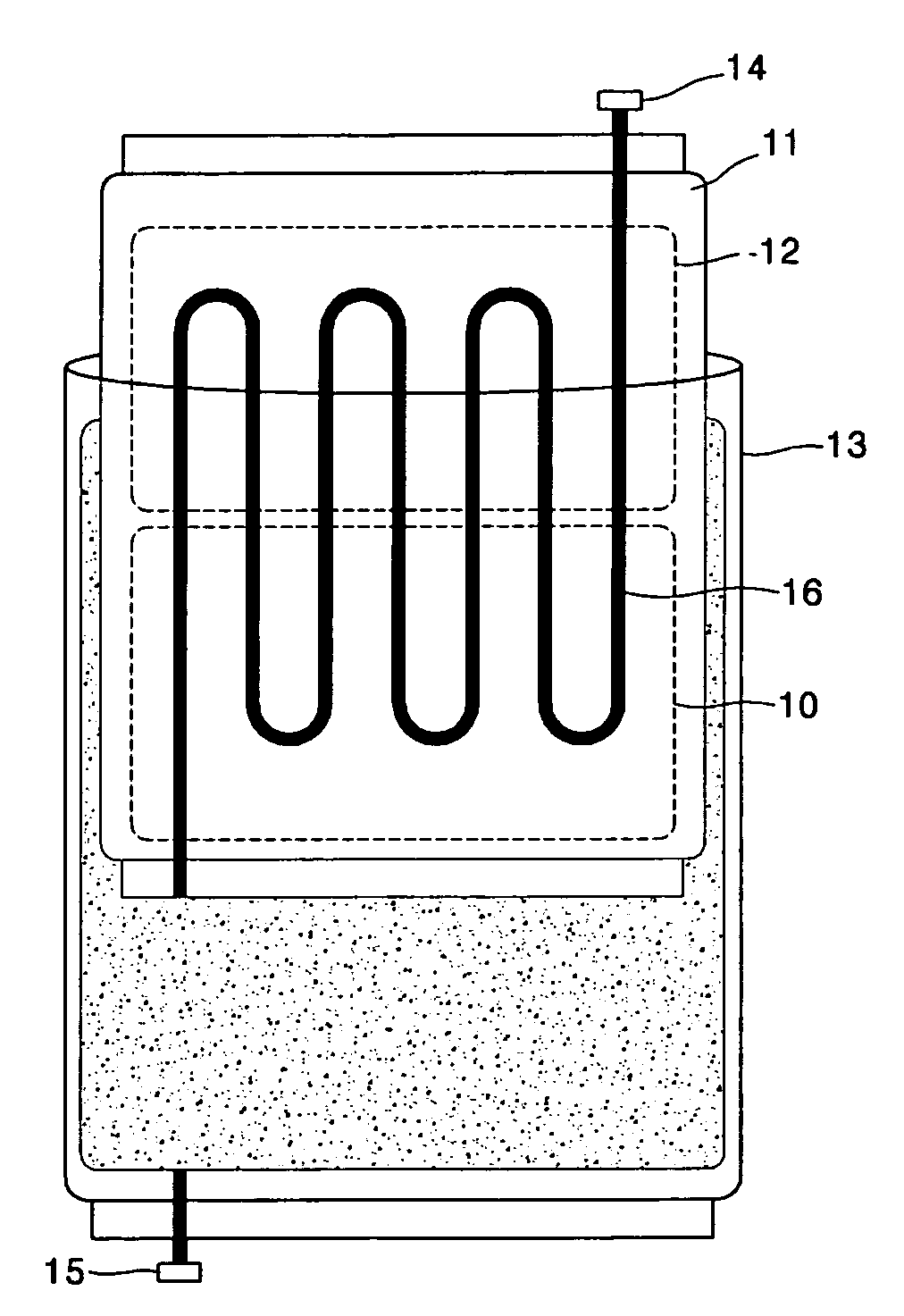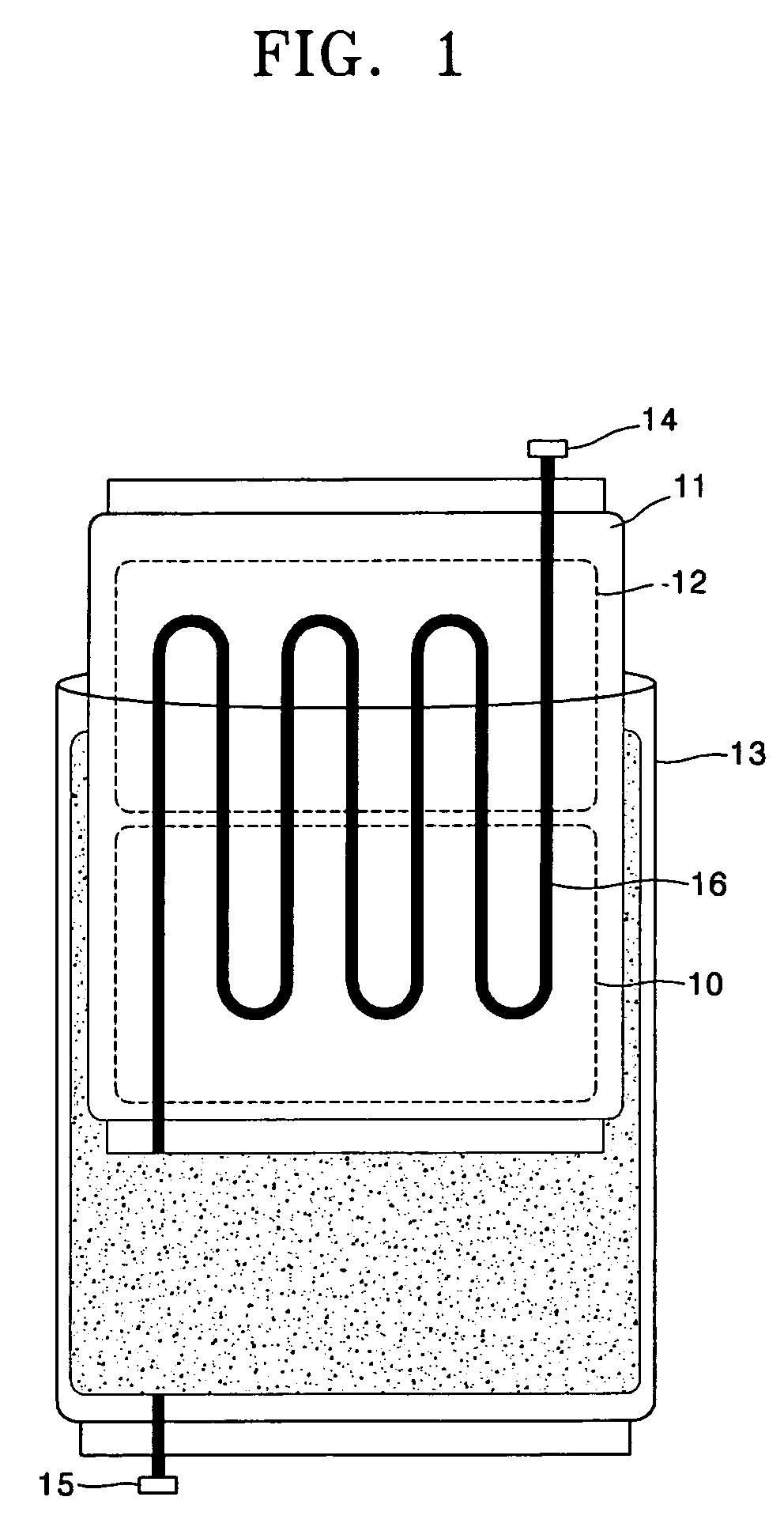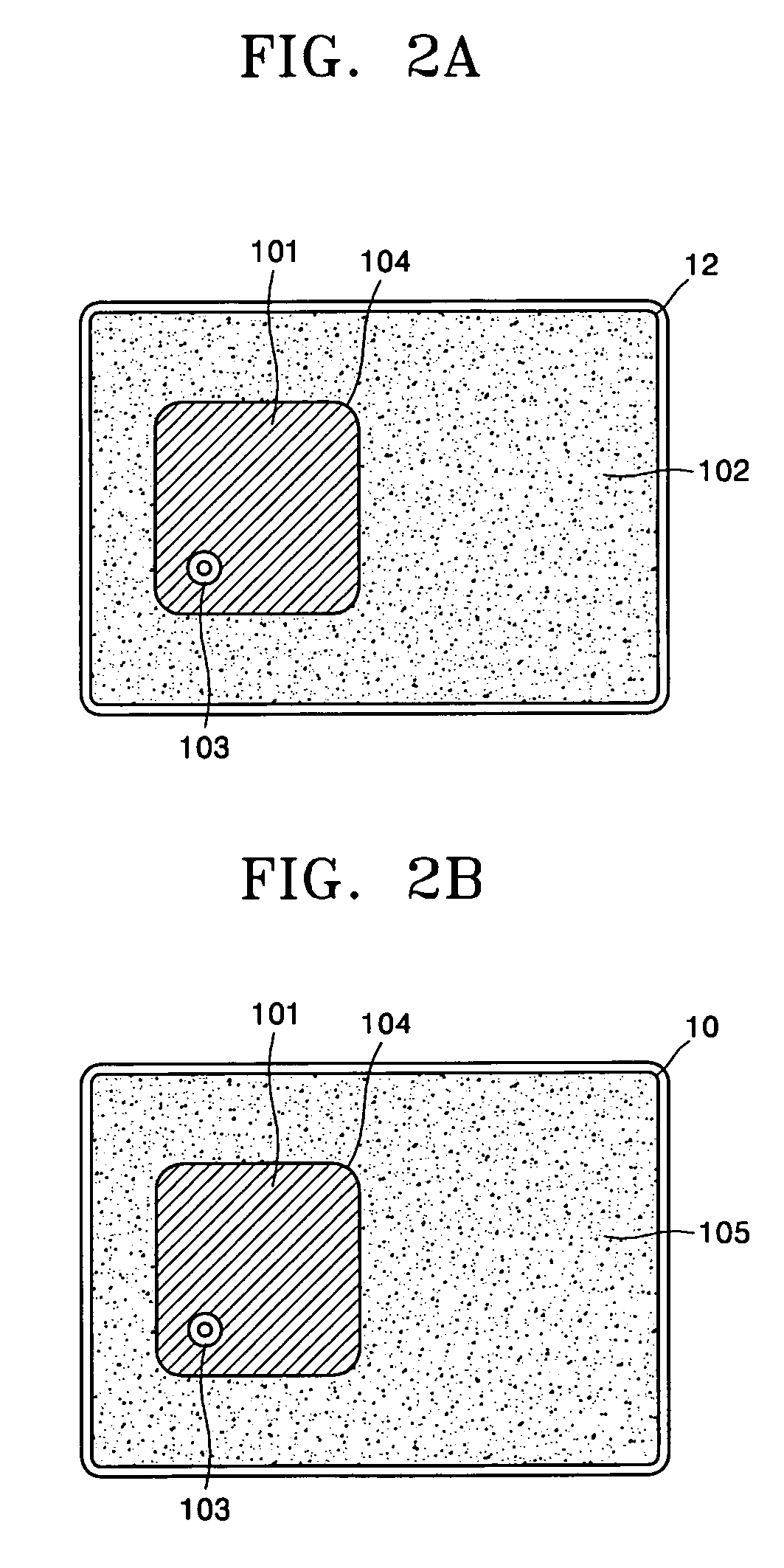Cell lysis by heating-cooling process through endothermic reaction
a cell lysis and endothermic reaction technology, applied in the field of cell lysis by heating-cooling process through endothermic reaction, can solve the problems of large amount of time required to complete cell disruption, cell lysis, and inability to concentrate ultrasonic bath, etc., and achieve the effect of convenient use and efficient cell lysis
- Summary
- Abstract
- Description
- Claims
- Application Information
AI Technical Summary
Benefits of technology
Problems solved by technology
Method used
Image
Examples
example 1
[0056] Formation of a Heating Pack
[0057] The heating pack 12 in FIG. 1 was formed using 2 g of a solid composition containing 5 wt % of MgCl and 6 wt % of NaOH with respect to 100 wt % of CaO and 5 ml of water. The heating pack 12 was composed of glass.
[0058] An external impact was applied to the heating pack 12 to induce an exothermic reaction in the heating pack 12. At this time, the temperature of the heating pack 12 increased up to 90° C., which was maintained for 10 min.
[0059] Formation of a Cooling Pack
[0060] The cooling pack 10 in FIG. 1 was formed using water and ammonium nitrate (NH4NO3) which can induce an endothermic reaction by being mixed together. The cooling pack 10 was composed of glass.
[0061] In the cooling pack 10, 80 g of solid ammonium nitrate and 9 ml of water were used to cause an endothermic reaction. The temperature of the cooling pack 10 was measured. The results are shown in FIG. 3. It can be seen from FIG. 3 that when an endothermic reaction occurs be...
example 2
[0067] Cell lysis was performed on gram positive bacteria B. megatrium and gram negative bacteria E. coli, respectively, as described below, and the results were identified using PCR.
[0068] Preparation of a Cell Sample
[0069] 100 μl of a cell sample source was inoculated into 5 ml of a LB medium and cultured for about 20 hours, and then dispensed into 5 e-tube vials. After centrifugation at 13.2 rpm for 3 minutes, the supernatant was discarded and the remainder was washed with distilled water. Centrifugation was performed at 13.2 rpm for 0.5 minute, and the supernatant was discarded. Each vial was resuspended with distilled water. Samples were collected in a 15 ml Falcon tube (total 5 ml).
[0070] The cell sample was diluted to 1 / 10 and measured with UV spectrum (600 nm). Assuming that B. megatrium has 1 copy of DNA per a cell and HBV of E. coli has 10 copies of HBV plasmid DNA per a cell, an initial cell concentration based on DNA, which was calculated using the measured UV spectru...
PUM
 Login to View More
Login to View More Abstract
Description
Claims
Application Information
 Login to View More
Login to View More - R&D
- Intellectual Property
- Life Sciences
- Materials
- Tech Scout
- Unparalleled Data Quality
- Higher Quality Content
- 60% Fewer Hallucinations
Browse by: Latest US Patents, China's latest patents, Technical Efficacy Thesaurus, Application Domain, Technology Topic, Popular Technical Reports.
© 2025 PatSnap. All rights reserved.Legal|Privacy policy|Modern Slavery Act Transparency Statement|Sitemap|About US| Contact US: help@patsnap.com



